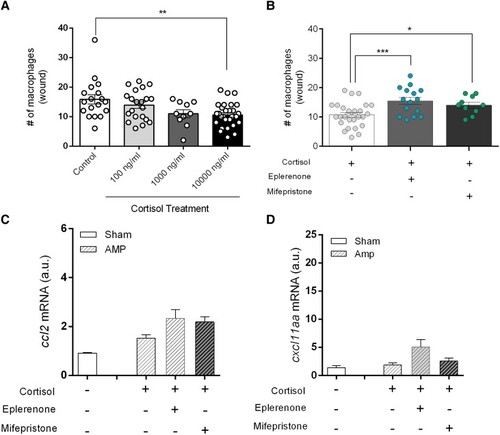Figure 7.
- ID
- ZDB-FIG-230916-76
- Publication
- Faught et al., 2023 - The mineralocorticoid receptor plays a crucial role in macrophage development and function
- Other Figures
- All Figure Page
- Back to All Figure Page
|
MR modulates the cortisol-induced reduction in macrophage migration toward a wound site. (A) Number of mpeg+ macrophages that have migrated toward the wound site (200 µm from amputation site), at 4 hours after amputation, in larvae exposed to different levels of cortisol ranging from doses that reflect physiological stress levels (100 ng/mL) to a pharmacological dose (10 μg/mL) (n = 11-30). (B) The number of mpeg+ macrophages that have migrated toward the wound site in the presence of cortisol (10 µg/mL), in combination with either eplerenone (1.25 µM) or mifepristone (1.25 µM) (n = 10-28). (C and D) Transcript abundance of genes encoding the macrophage-specific chemoattractants |

